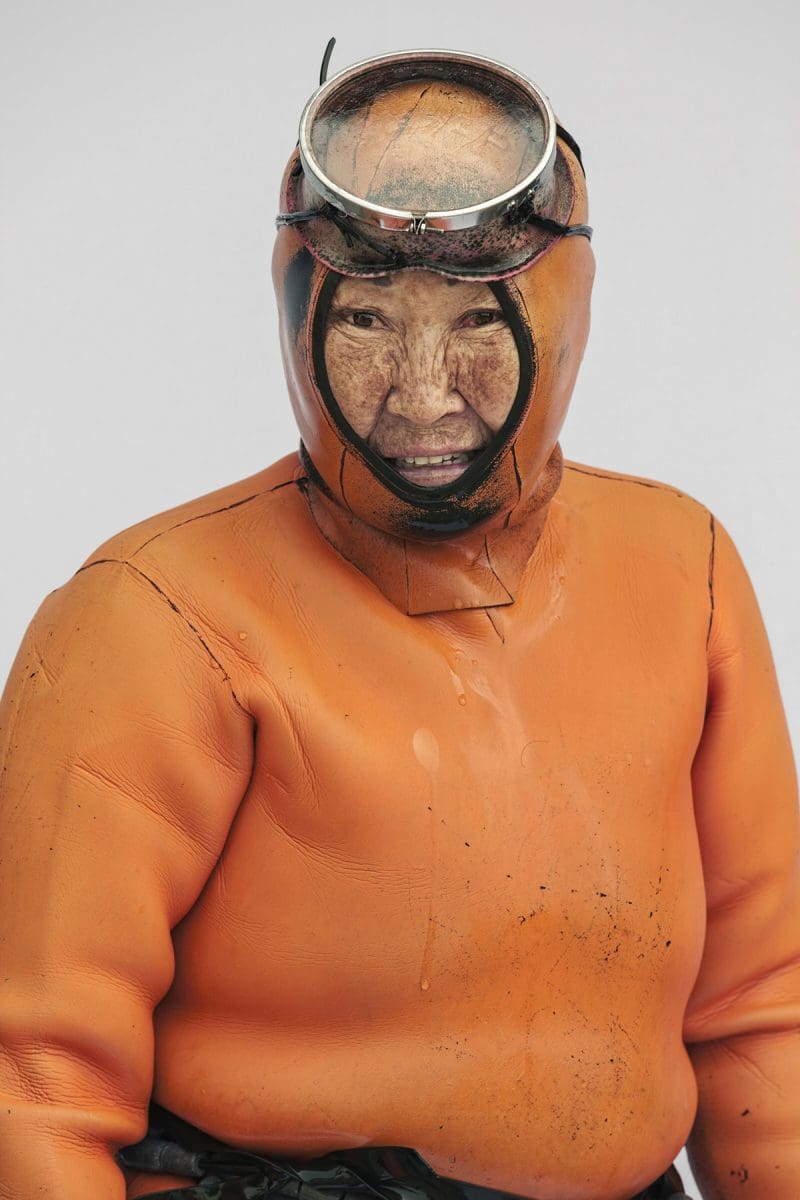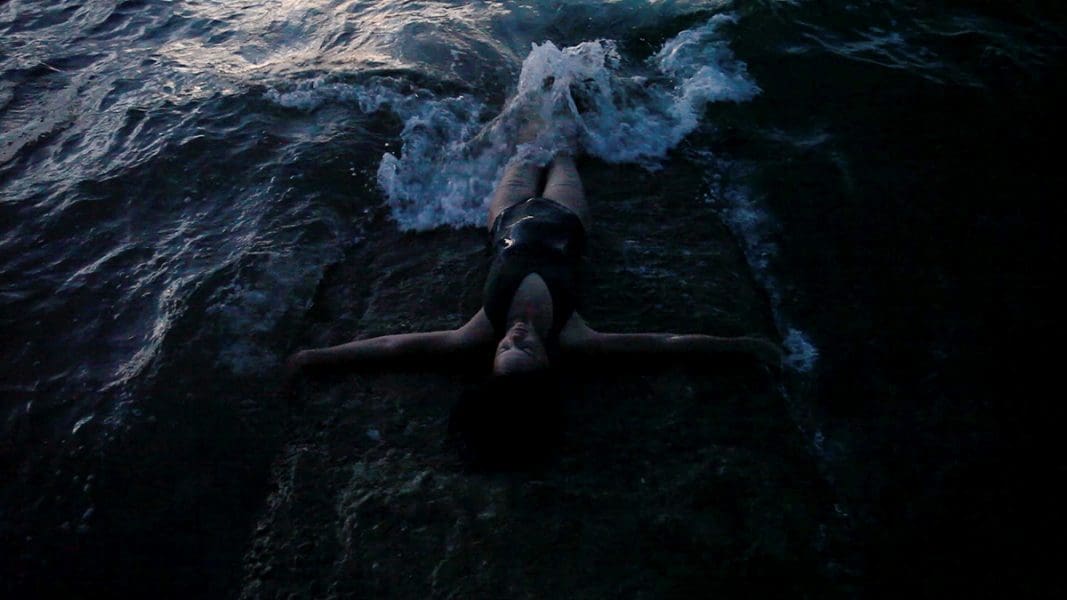
Piercing the veil
A new exhibition at Buxton Contemporary finds a rich complexity in the shadowy terrain between life and death.

Angela TIATIA, Holding On (still from digital moving image) 2015, 12:12 mins, single-channel High Definition video, 16:9, colour, sound. Courtesy the artist and Alcaston Gallery, Narrm Melbourne.

Hyung S. KIM, Kim Julja, Dodu Jeju, 2013, digital photograph. Courtesy of the artist.

Alan SEKULA and Noël BURCH, The Forgotten Space (still from digital moving image), 2010. Courtesy of Icarus Films.

Angela TIATIA, Holding On (still from digital moving image) 2015, 12:12 mins, single-channel High Definition video, 16:9, colour, sound. Courtesy the artist and Alcaston Gallery, Narrm Melbourne.
The Ocean After Nature, a collaboration between Independent Curators International (ICI), New York and Samstag Museum of Art, Adelaide is the continuation of an ongoing relationship between the two organisations. Having previously joined forces in 2015 for do it [adelaide], Samstag curator Gillian Brown explained that “when Alaina Claire Feldman, ICI’s director of exhibitions, and the curator of The Ocean After Nature, approached us to host this critically underpinned exhibition we were very excited to continue the relationship.”
Through the work of 20 international artists and collectives, the exhibition explores our relationship with the ocean, in a period where humans are having an increasingly greater impact on the natural world. Feldman comments, “The works reveal how we make sense of the ocean today, and how politics, economies, and culture propel today’s planetary issues. They trace critical changes in our relationship with the natural world specifically through the frame of the ocean – the fluid network that connects vast parts of our environments, and the very site from which all life originates.”
Engaging with its audience through various modes of aesthetic interpretation, the exhibition encourages creative thinking and for people to reimagine their relationship to nature and their overarching place within the world.
The starting point for The Ocean After Nature was Allan Sekula and Nöel Burch’s 2010 film, The Forgotten Space. Brown elaborates, “This cinematic film posits the ocean as a highway for global trade and capitalism with dire consequences for the environment. It is a beautifully shot film and will be screened in the gallery.”
Other standout works include beautiful photographic portraits by Hyung S Kim who presents female seafood divers from South Korea, known as haenyeo. These incredible women dive into depths of up to 10 metres without the assistance of a breathing apparatus. Their strength and courage is stunningly depicted and with the portraits shot on a white backdrop, there is nothing to detract from the direct gaze of these formidable women.
A sound work by US-based DJ collective Drexciya presents a playlist from their EP. With music that contains properties akin to the ocean, such as flow and rhythm, Brown is enthusiastic about elements this brings to the exhibition, commenting, “For me, thinking about the scale of a song in relation to unpredictability of the seas is revelatory; allowing your imagination to enter the expanse of the oceans through listening is brilliantly mind opening, a brilliantly metaphoric ‘way in’ to the ideas of the exhibition.”
The Ocean After Nature encompasses film and video, drawing, photography, sound and archival practices, examining how, as Feldman puts it, “the seascape is shaped in an era when human beings have become the driving force in the development of the planet.” The exhibition runs concurrently to Countercurrents and forms part of the Adelaide Festival.
Both The Ocean After Nature and Countercurrents respond to the aims and ambitions of the Adelaide Festival’s new artistic directors, Neil Armfield AO and Rachel Healy, whose motives, as they put it, include seeking out “works of scale and generosity; work that contests, interprets and connects us to the great ideas and challenges of our time”. Brown, who also co-curated Countercurrents with Erica Green, is excited about the insights the artists in these exhibitions will present on some of the most important and imminent concerns our society faces. Brown elaborates, “There is incredible openness and generosity to be found in the idea that the ocean is a connector of us all, that a decision by some of us is a decision for all of us. It’s very humbling to think along these lines and it is obviously where some of the greatest challenges lie.”
Listening to Brown discuss The Ocean After Nature it is difficult not to become excited by the seemingly unlimited possibilities and scope the exhibition and artists are presenting. Hoping to evoke a new perspective on the issues addressed and an overall sense of connectedness for the audience, the curator’s enthusiasm is infectious when she says, “These are socially engaged exhibitions, and it is in the breadth of approaches that my excitement arises – I hope the combination of big ideas and aesthetic ambition in the works energises others, too.”
The Ocean After Nature
Samstag Museum of Art, Adelaide
2 March – 9 June